Continuing my interest in the Duke of York's campaign in 1793-5 in Flanders and the Netherlands, I visited the Pubic Record Office of Northern Ireland in Belfast. Included in their archives is Arthur Brooke's diary of his war experiences between 1794 and 1814. His diary is more famous for his account of his participation in the 1812-14 war with the USA, but also includes his experiences in the Mediterranean theatre during the Napoleonic Wars. Unfortunately his diary for 1794 & 1795 deals more with the dreadful retreat than the fighting, but is still of great interest;
“On the 31st of October 1793 got my first commission in the 44th Regiment as Ensign, & joined it in Dublin Barracks, where I was quartered till the 25th April 1794, when I embarked at the Pigeon House for England. Landed at Liverpool and marched from thence to Dartford & Gravesend, marched through London. The year 1794 embarked at Gravesend for Ostend to join the Duke of York’s army. Went from Ostend to Antwerp. Antwerp a beautiful town, the church an elegant structure. I there saw a fine picture of Christ ascending to Heavan. Marched from Antwerp to Breda from thence to Bois-le-Duc & from there to Nuimegon[sic] on the banks of the Waal, where we took up our position till late November, when the British army retired[?] across the Rhine , I never saw a more dreadful retreat. Men women & children were froze to death & the greater part of the Army lost; this dreadful weather lasted till March, when we arrived at Hamburgh and in April embarked for England, when I arrived on the 25th of May 1795 at Sunderland, in the north of England.”
(Source: PRONI D3004D/1, p. 1)
Although he doesn't mention it in his diary Brooke was promoted to Lieutenant on the 26th November 1793 (Source: Army List 1795, p.142). Lt Brooke left the UK with Lord Moira's force which was sent to reinforce the Duke of York's army. Thus, Sir Arthur Brooke would have fought at Boxtel with the 44th Foot in Wellington's First Battle.




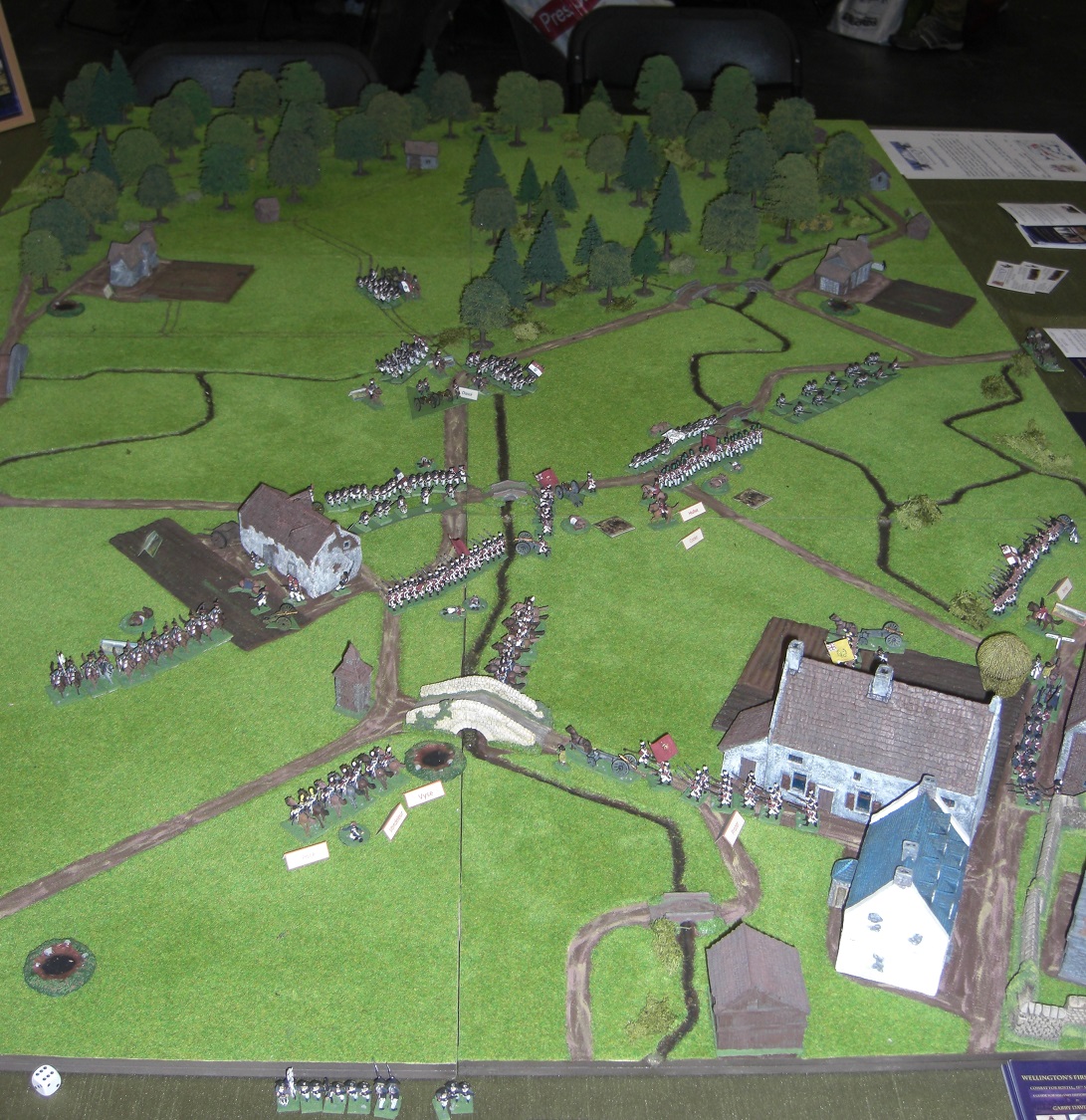


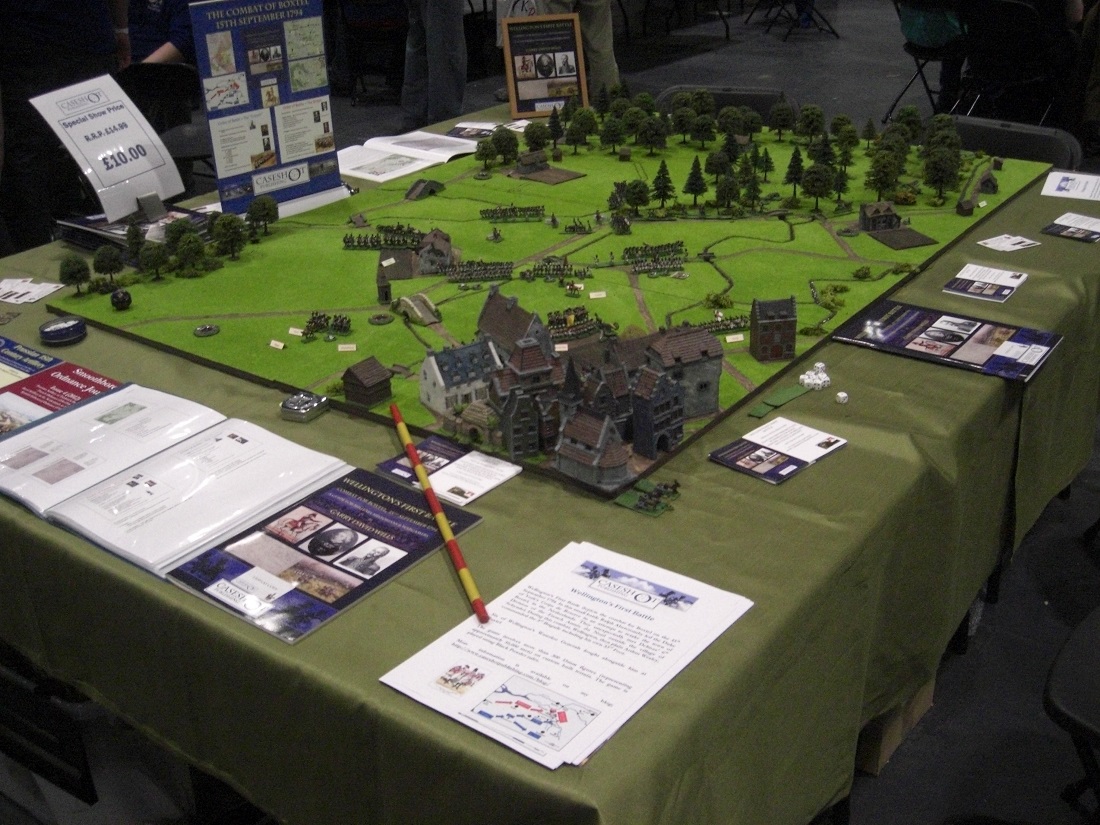
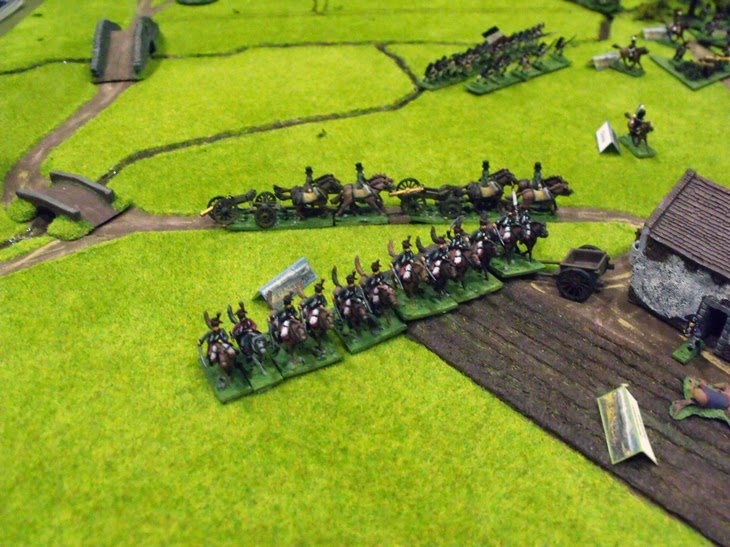


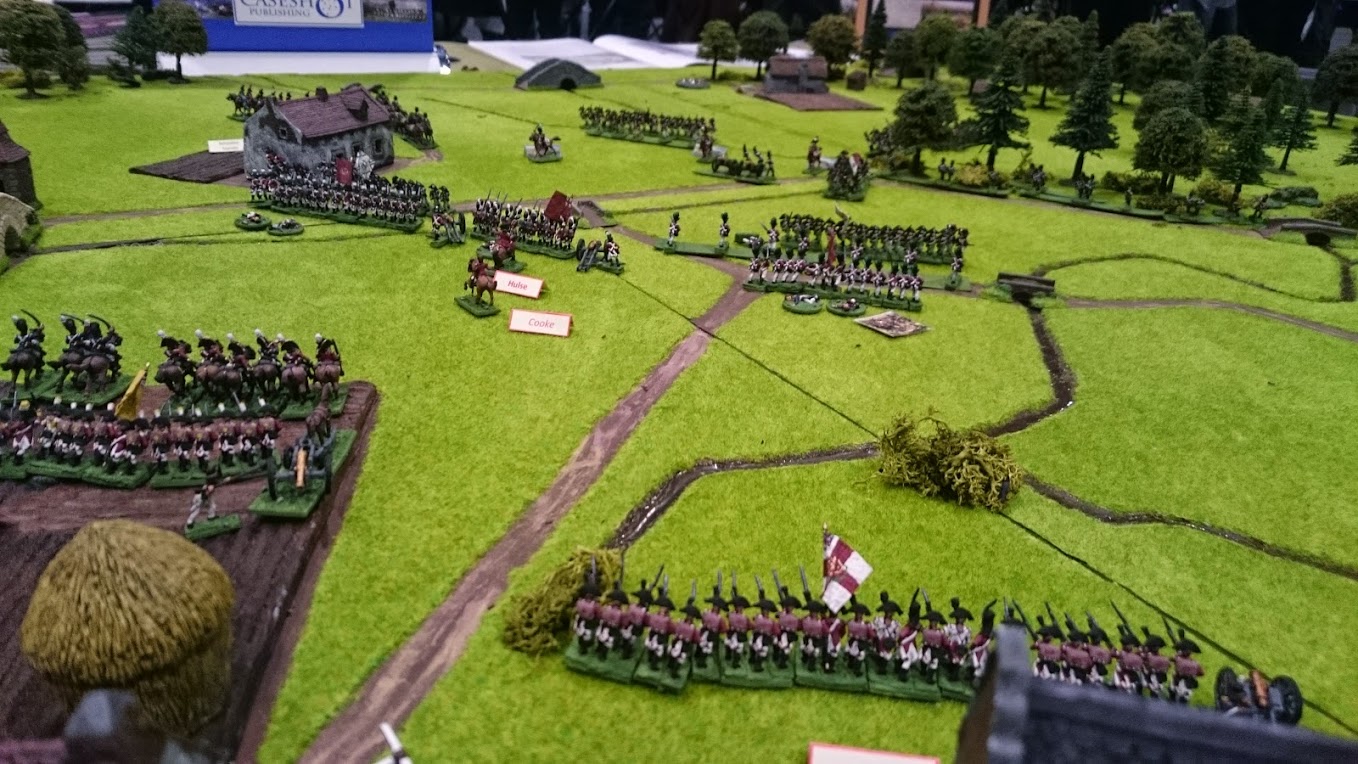
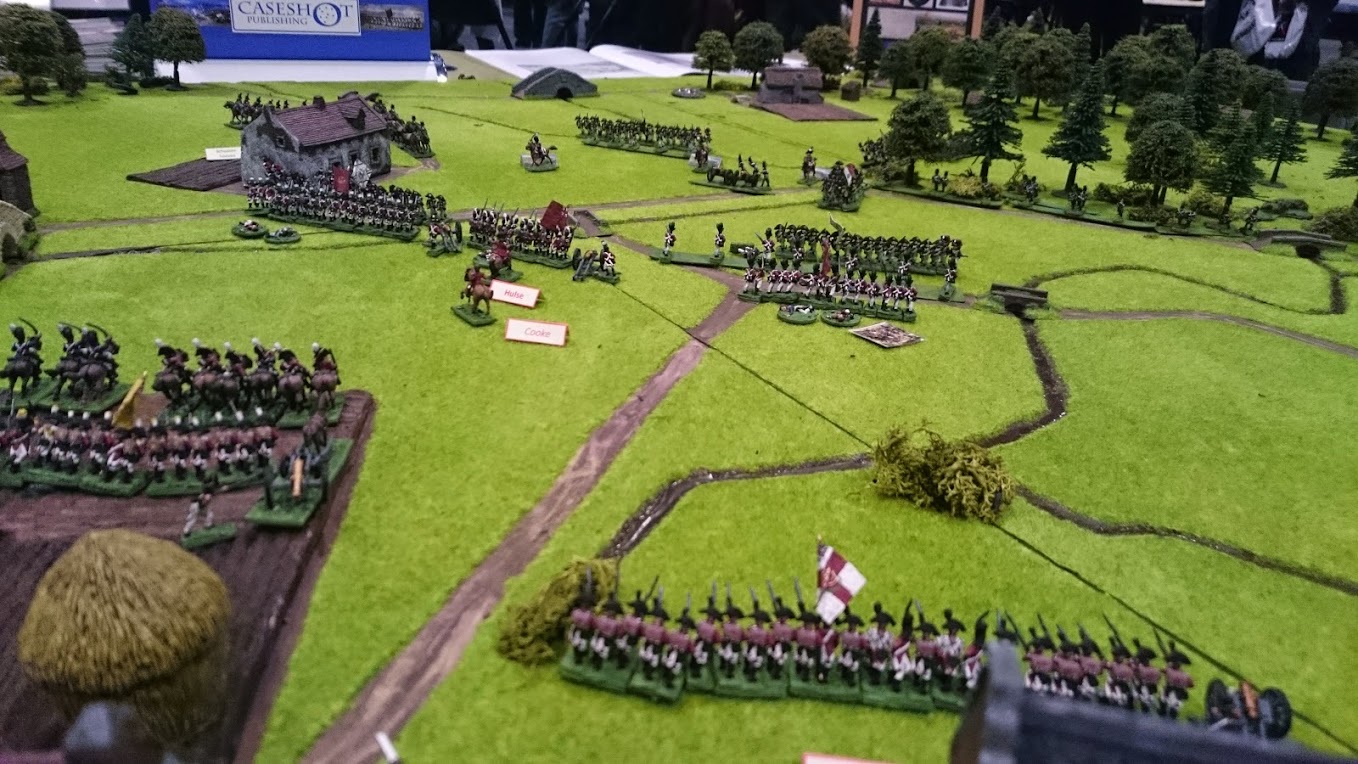
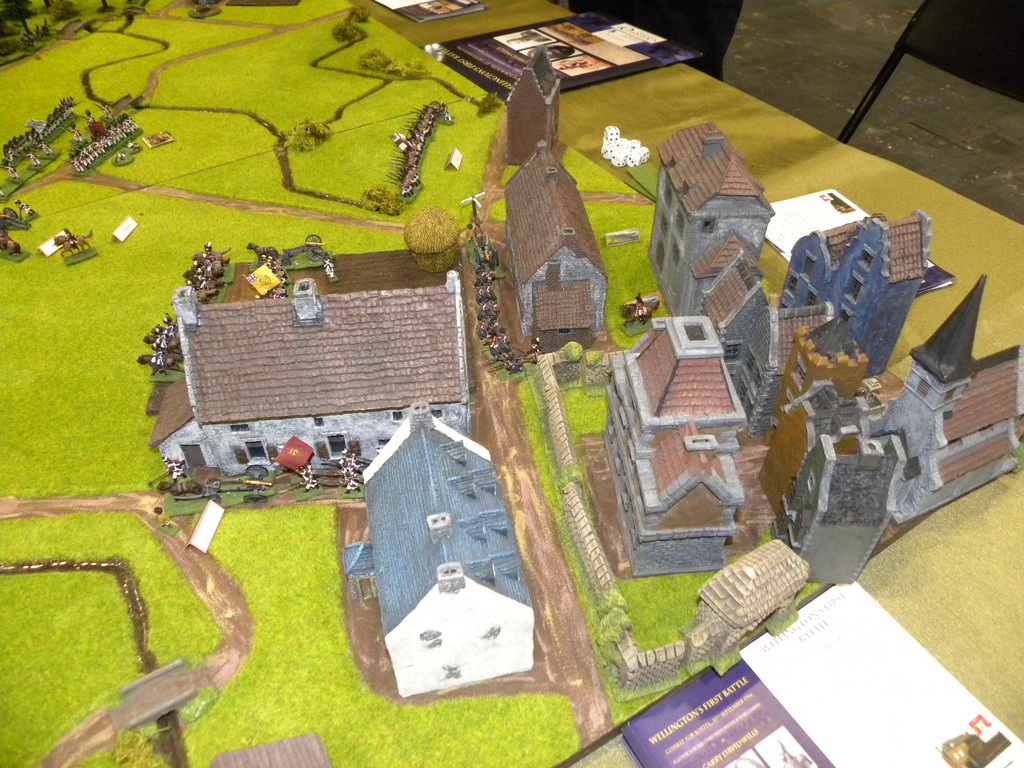


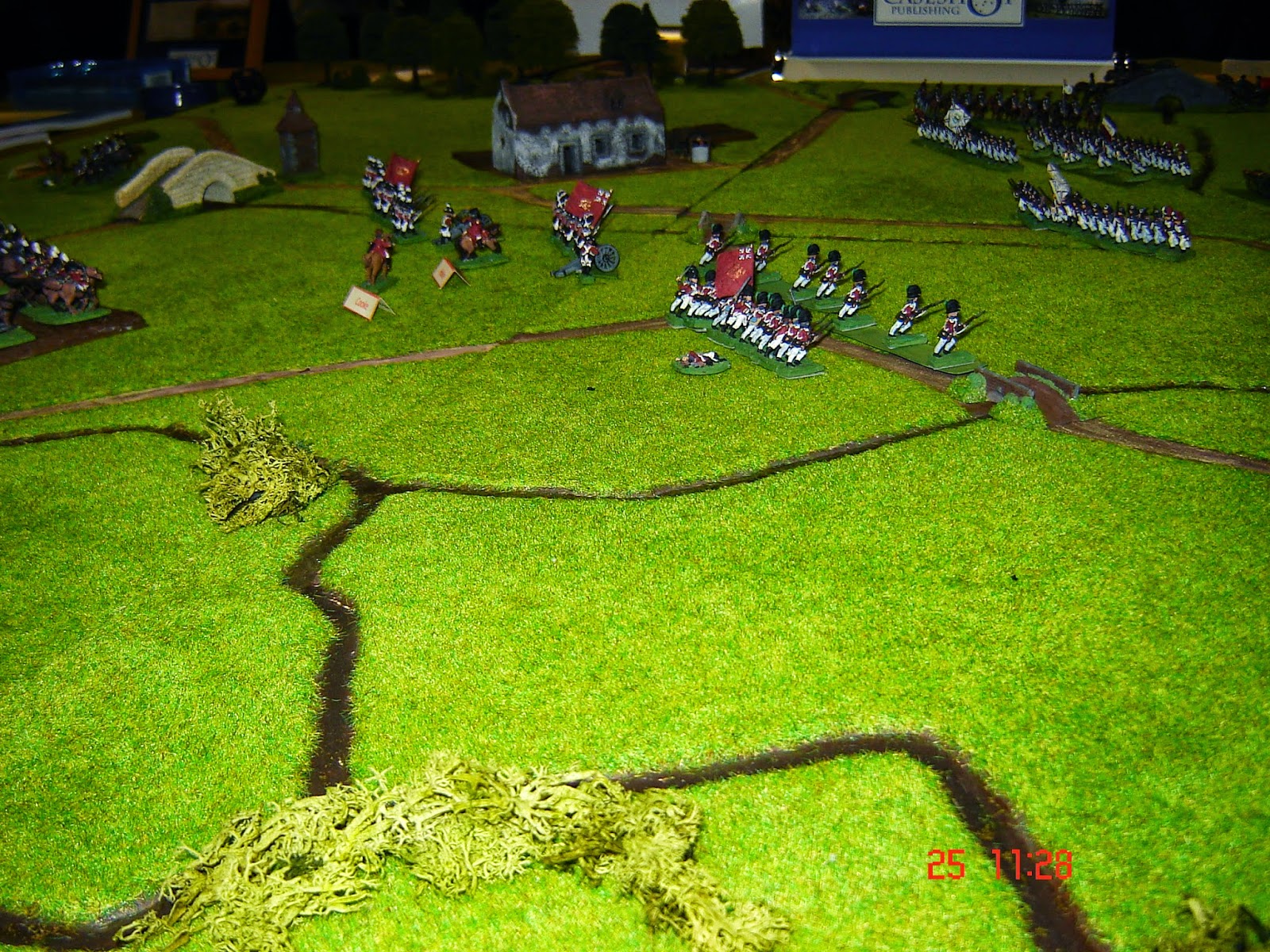
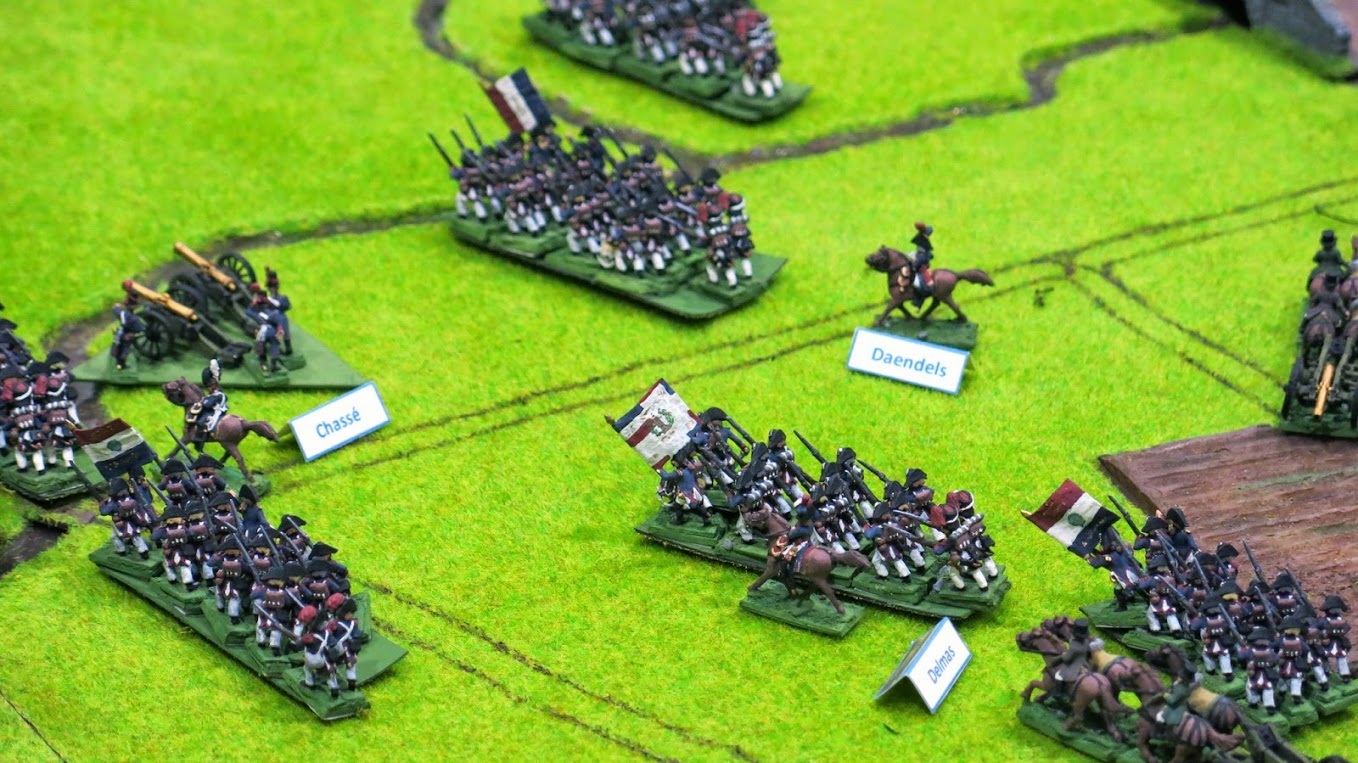
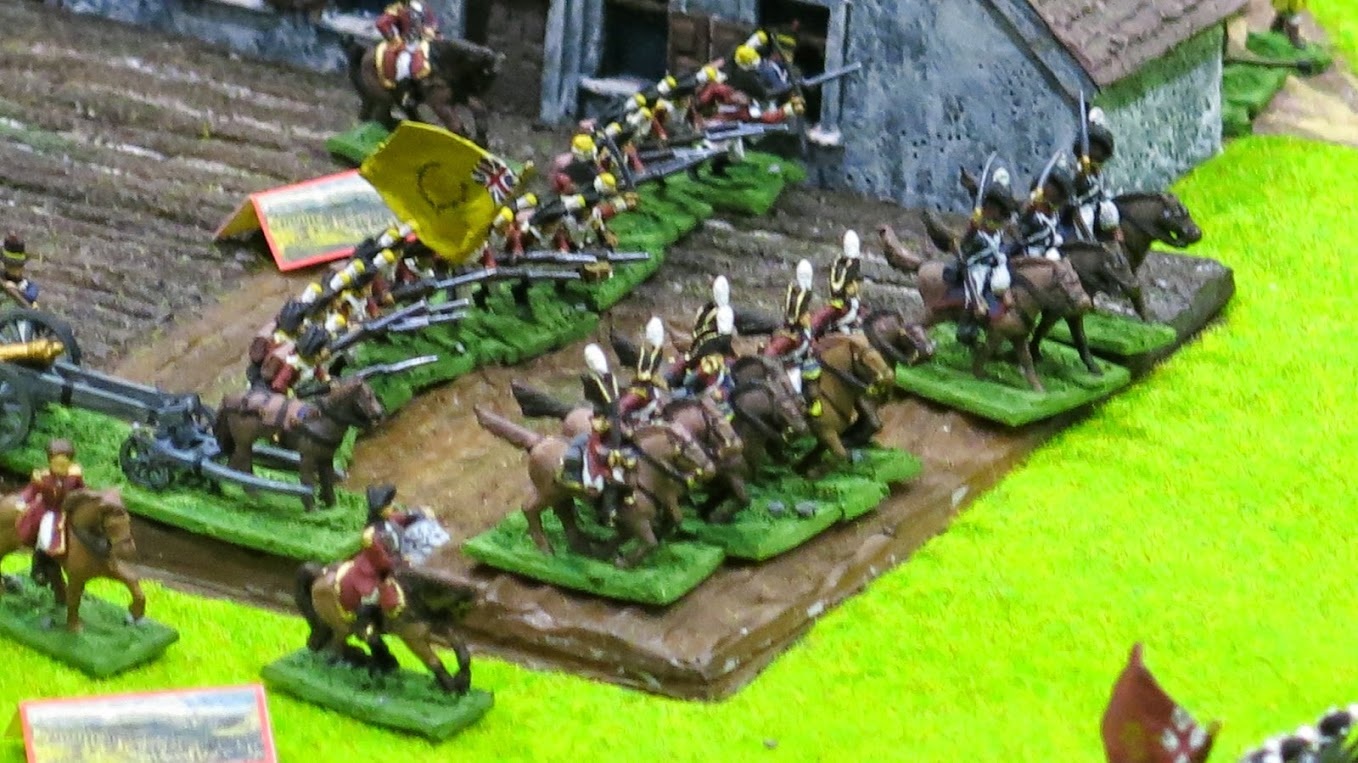
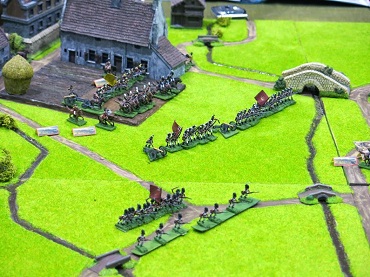



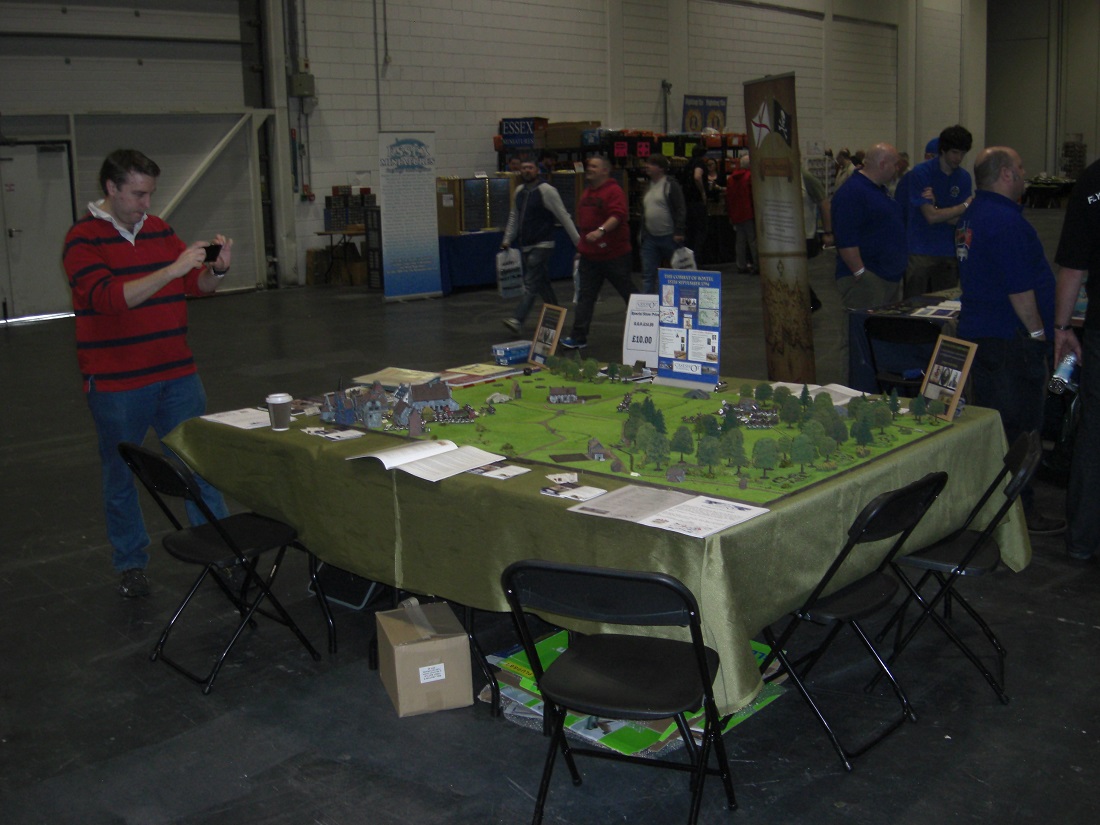
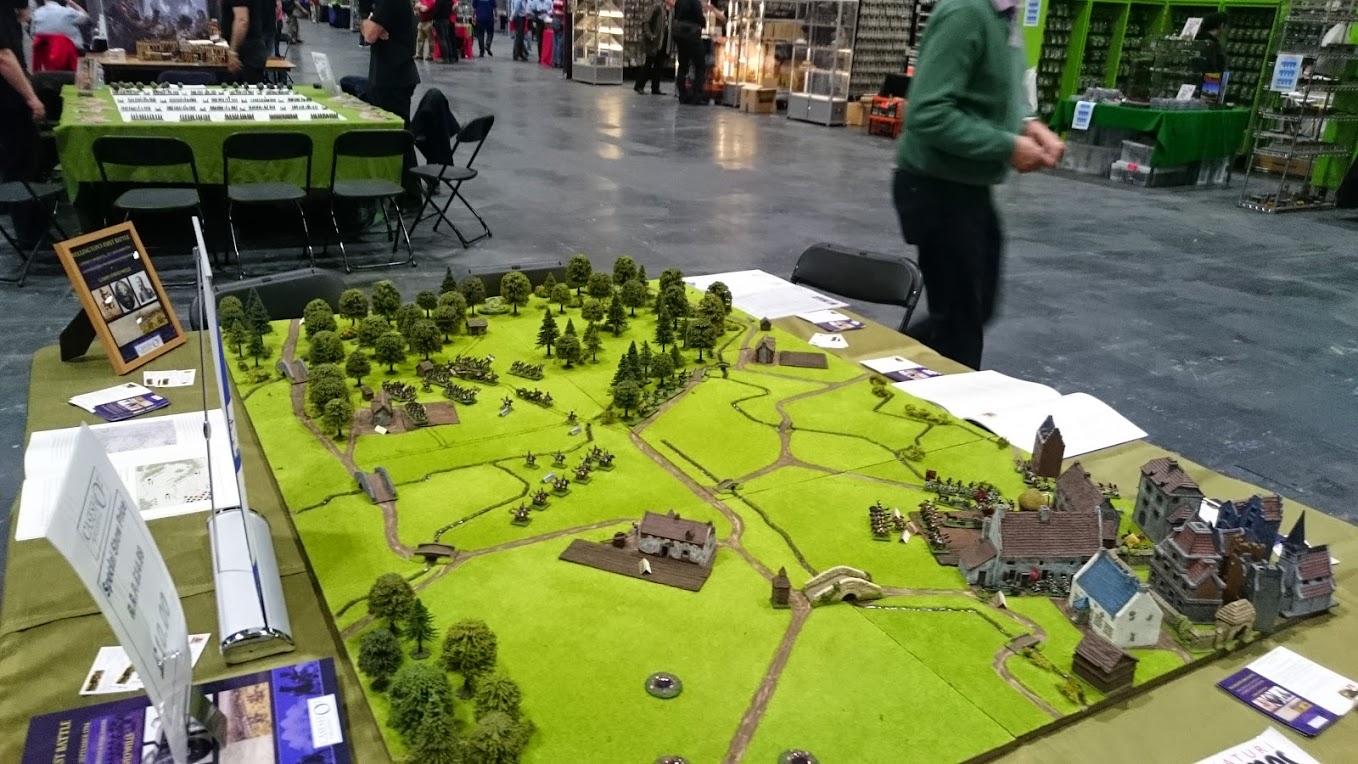
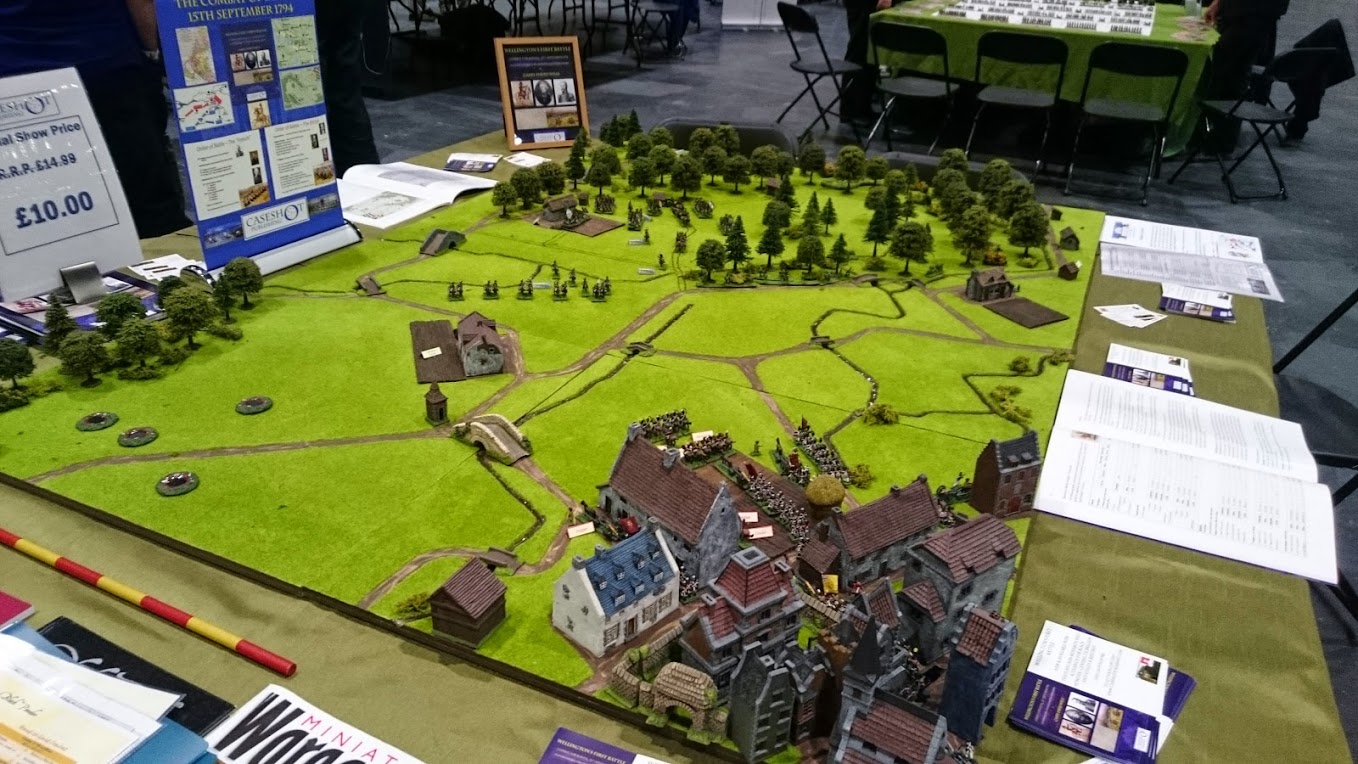
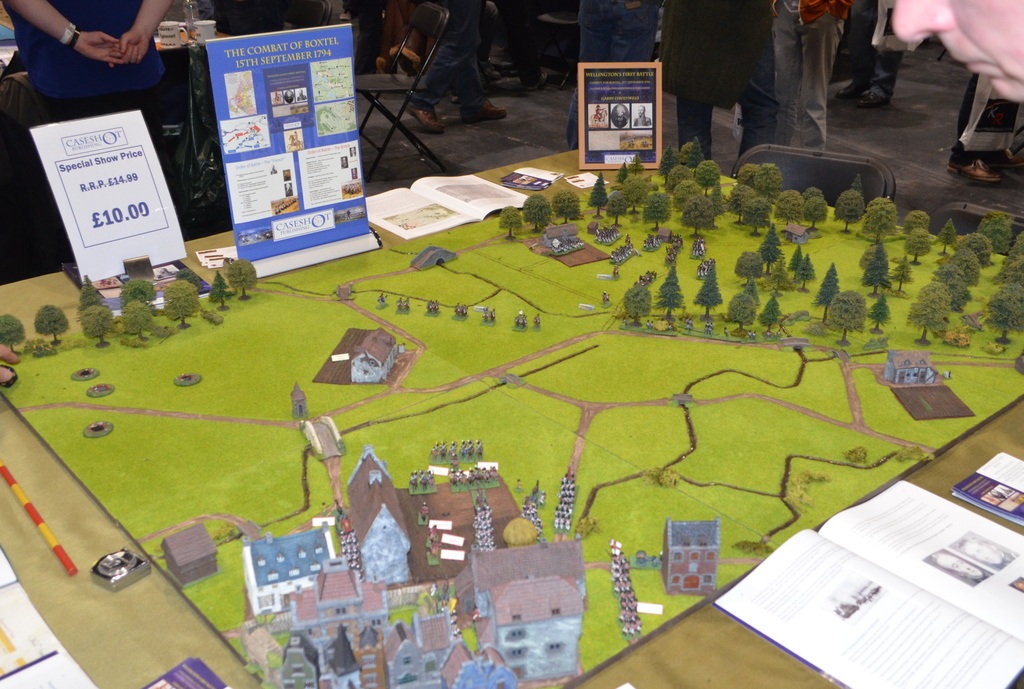








 Nice light and airy venue - the other upstairs hall was splendid
Nice light and airy venue - the other upstairs hall was splendid
 The table set up with plenty of room for supporting materials
The table set up with plenty of room for supporting materials
 As the British emerge from Schyndel they can see the French vedettes in the early morning mist
As the British emerge from Schyndel they can see the French vedettes in the early morning mist
 Daendels brigade is struggling to get forward as it can't use "brigade moves" in the first two turns
Daendels brigade is struggling to get forward as it can't use "brigade moves" in the first two turns
 The British Light Dragoons advance boldly to drive off the French Hussars .....
The British Light Dragoons advance boldly to drive off the French Hussars .....
 ... only to be broken in the ensuing cavalry combat and resulting sweeping advance. Meanwhile Daendels finally gets his brigade moving forward - his battalion guns looking for the convenient bridge.
... only to be broken in the ensuing cavalry combat and resulting sweeping advance. Meanwhile Daendels finally gets his brigade moving forward - his battalion guns looking for the convenient bridge.
 The French Hussars are driven off by the advancing British Guards
The French Hussars are driven off by the advancing British Guards
 Wesley's brigade looks on from their position in reserve near Schyndel
Wesley's brigade looks on from their position in reserve near Schyndel
 The French infantry arrive to drive back the British Guards, breaking the First Foot Guards
Some links featuring other photographs of the game;
The French infantry arrive to drive back the British Guards, breaking the First Foot Guards
Some links featuring other photographs of the game;

 In order to give the pieces some weight, so that theywould stay in place - I then glued the ends to two pence pieces and covered them with flock and gravel.
In order to give the pieces some weight, so that theywould stay in place - I then glued the ends to two pence pieces and covered them with flock and gravel.
 The whole was then painted appropriately. These photos show the finished product in play - not as good as my custom built terrain boards but a lot better than chalk marks on the cloth!
The whole was then painted appropriately. These photos show the finished product in play - not as good as my custom built terrain boards but a lot better than chalk marks on the cloth!

 Some Dutch ditches today;
Some Dutch ditches today;

 Finally a contemporary cartoon of the Duke of York battling to escape one of these pesky ditches in May 1794, when his army was all but surrounded;
Finally a contemporary cartoon of the Duke of York battling to escape one of these pesky ditches in May 1794, when his army was all but surrounded;

 The strong sun dispersing the mist rather quicker than happened on 15th September 1794, revealing the British emerging from Schyndel on the right, while the French are deployed to the left, their hussars keeping close to their supporting light infantry. Although the action is known to history as the combat of Boxtel, that town is actually two game board lengths away from the heart of the action.
The strong sun dispersing the mist rather quicker than happened on 15th September 1794, revealing the British emerging from Schyndel on the right, while the French are deployed to the left, their hussars keeping close to their supporting light infantry. Although the action is known to history as the combat of Boxtel, that town is actually two game board lengths away from the heart of the action.
 The French deployment with most of their strength not directly visible from Schyndel. Daendels' 6 battalion brigade deployed behind Chassé's advanced guard.
The French deployment with most of their strength not directly visible from Schyndel. Daendels' 6 battalion brigade deployed behind Chassé's advanced guard.
 The British advance with the Light Dragoons moving ahead of the Guards brigade with Wesley's (i.e. Wellington) 3rd Brigade bringing up the rear.
The British advance with the Light Dragoons moving ahead of the Guards brigade with Wesley's (i.e. Wellington) 3rd Brigade bringing up the rear.
 Delmas trying to bring up two reluctant battalions which failed successive Black Powder command rolls.
Delmas trying to bring up two reluctant battalions which failed successive Black Powder command rolls.
 The Guards light companies facing off the French light infantry on the right, supported by the 44th Foot.
The Guards light companies facing off the French light infantry on the right, supported by the 44th Foot.
 The crisis approaches as the Guards brigade deploys across the main road to Boxtel, repulsing the French attack by breaking Daendels' brigade. Each pair of battalion guns on both sides are represented by a model gun with a single crew figure and reduced Black Powder fire effect.
The crisis approaches as the Guards brigade deploys across the main road to Boxtel, repulsing the French attack by breaking Daendels' brigade. Each pair of battalion guns on both sides are represented by a model gun with a single crew figure and reduced Black Powder fire effect.  The roads are a textured masonry paint highlighted with lighter colours.
The roads are a textured masonry paint highlighted with lighter colours.
 The grass finish is made using Guagemaster flock based grass matting stuck down carefully with pva, with all edges concealed with additional flock (very time consuming!)
The grass finish is made using Guagemaster flock based grass matting stuck down carefully with pva, with all edges concealed with additional flock (very time consuming!)
 The finished boards dressed with buildings from Hovels, JR Miniatures, Battleground and Total Battle Miniatures; ponds created from painted shell holes; ploughed fields by JR Miniatures; K&M trees.
The finished boards dressed with buildings from Hovels, JR Miniatures, Battleground and Total Battle Miniatures; ponds created from painted shell holes; ploughed fields by JR Miniatures; K&M trees.




 The French 8 pdr Horse Artillery of the 4th Company 9th Artillery, supporting the skirmishers of the 3rd Battalion of the 30th Light Demibrigade , both units recruited from a mixture of Dutch, Belgian and Swiss soldiers in exile. These figures are all Minifigs.
The French 8 pdr Horse Artillery of the 4th Company 9th Artillery, supporting the skirmishers of the 3rd Battalion of the 30th Light Demibrigade , both units recruited from a mixture of Dutch, Belgian and Swiss soldiers in exile. These figures are all Minifigs.
 A close up of the British marching out of Schyndel, these figures are all 15mm Minifigs, with the exception of the general figures, which are from the Wessex AWI range.
A close up of the British marching out of Schyndel, these figures are all 15mm Minifigs, with the exception of the general figures, which are from the Wessex AWI range.
 On the French right, Daendels' 29th and 199th Demibrigades de Bataille advance to contact, the figures are a mixture of Minifigs and Magister Militum figures.
[singlepic id=119 w=600 float=center]
On the French right, Daendels' 29th and 199th Demibrigades de Bataille advance to contact, the figures are a mixture of Minifigs and Magister Militum figures.
[singlepic id=119 w=600 float=center]
 The climax of the action as the British Guards have advanced in line, they are about to push back the French light troops but in turn the Guards were forced to retire by Daendels' infantry and the game ended in a draw.
The climax of the action as the British Guards have advanced in line, they are about to push back the French light troops but in turn the Guards were forced to retire by Daendels' infantry and the game ended in a draw.
 Another shot of the climax, with the young Lt. Col. Arthur Wesley, future Arthur Wellesley, Duke of Wellington, in the bottom right of the image, preparing to form the 33rd Foot into line to protect the retreat of the Guards Brigade. He is wearing a very modern bicorne for the 1790's!
Another shot of the climax, with the young Lt. Col. Arthur Wesley, future Arthur Wellesley, Duke of Wellington, in the bottom right of the image, preparing to form the 33rd Foot into line to protect the retreat of the Guards Brigade. He is wearing a very modern bicorne for the 1790's!